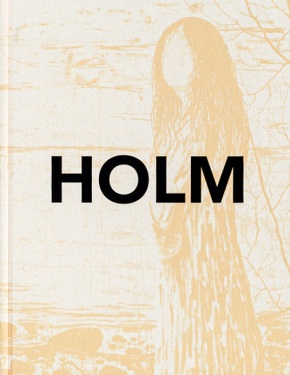| Verlag | DCV Dr. Cantzsche |
| Auflage | 2024 |
| Seiten | 192 |
| Format | 25,4 x 1,9 x 32,8 cm |
| Gewicht | 1337 g |
| ISBN-10 | 3969121906 |
| ISBN-13 | 9783969121900 |
| Bestell-Nr | 96912190A |
René Holm zielt aufs Ganze: auf die Ambivalenz des menschlichen Daseins und unseres Verhältnisses zur Natur. Manche seiner Protagonist_innen sind äußerlich nackt, und alle verkörpern sie über ihre Posen ein Innenleben. Die gesichtslosen Figuren fungieren als Projektionsflächen für die Gefühle der Betrachter, es sind Sinnbilder universeller menschlicher Erfahrungen. Sehr oft kommt es daher vor, so Holm, dass sich Menschen in seinen Protagonist_innen wiedererkennen. Dafür ist auch der Wald, Schauplatz aller Bilder dieses Katalogs und seit Jahrzehnten Holms Atelier und bevorzugte Kulisse, verantwortlich. Denn dort findet er jenes Zwielicht, das in unser aller Seelen glimmt: Der Wald nährt und bedroht uns, hier wohnen gute Feen und fiese Dämonen, hier findet man das Leben und den Tod. Die Erhabenheit des Waldes - zentrales Motiv der Romantik - übersetzt er in eine heutige Bildsprache. Dafür hat er kürzlich einen radikalen ästhetischen Umbruch gewagt. Statt wie bisher pastos zu malen, bringt er nun die Pigmente dünner, trockener auf die Leinwand. Der Band zeugt von diesem spektakulären Neubeginn, mit dem er uns in seelische Tiefen und geheimnisvolle Wälder entführt.
René Holm goes for the big picture, painting the ambivalence of human existence and our relationship with nature. Some of his protagonists are physically naked, and all embody an interior life through their poses. The faceless figures function as screens onto which the beholders can project their own feelings, as symbols of universal human experiences. That is why, Holm notes, people very often recognize themselves in his protagonists. The effect is in part due to the forest, the setting of all pictures in this catalogue, which has been Holm's studio and preferred backdrop for decades. It is where he finds the twilight that glows in all of our souls: woodlands nourish and menace us, they are home to helpful fairies and nasty demons, one can find life and death alike in them. He translates the sublime of the forest-a central motif in the Romantics-into a contemporary visual idiom. In his pursuit of this endeavor, he has recently ventured a radical aesthetic change: instead of using thick paints as before, he now applies the pigments to the canvas in thinner and drier layers. The book illustrates this spectacular fresh start, carrying us off into the depths of the soul and mysterious woodlands.

